The saliva is not as good as the real gun live TV in the end which is strong?
Consumers should choose TV as prudent as they choose to, because a TV will at least accompany you for five or six years, whether it is when you just owned or not. You will not be happy or unhappy in your life. The most important thing in choosing a TV is picture quality. This is no doubt. What is the second most important thing? Some people say appearance, others say hardware performance. But I think the second most important thing should be the TV's operating system and the contents of the TV.
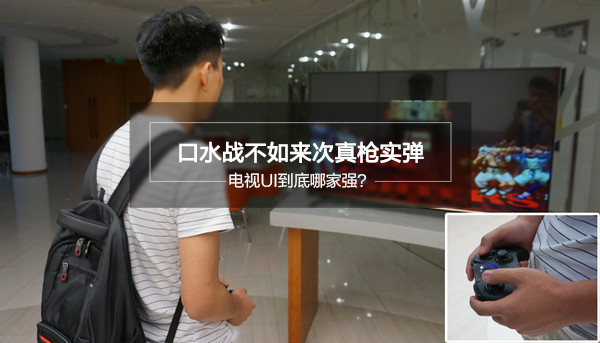
TV is still more of a consumable product, and television manufacturers are increasingly emphasizing the difference and uniqueness of their own TV's operating system and content. As television gradually embarks on an intelligent road, smart operating systems have become an important factor influencing consumer experience, in addition to picture quality. Whether it is the fluency of the system or the abundance of resources, it has become a place where TV makers must compare, and it is also a project that needs to be carried out by every friend at the press conference.

Hengping explanation:
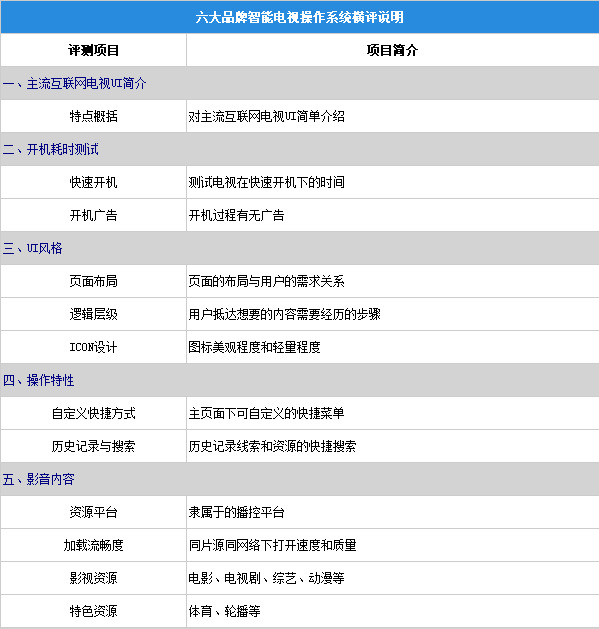
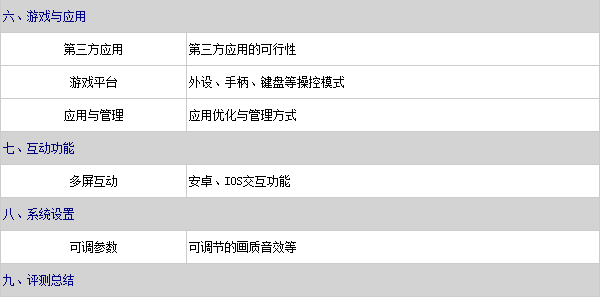
Introduction to mainstream Internet TV UI
The six brands are just a representative. The smart TV brands on the market are far more than these six brands. Before evaluating the six brands of smart TV UIs, let’s find out what the current mainstream Internet TV operating systems on the domestic market are like. specialty.
Cool open - cool open system
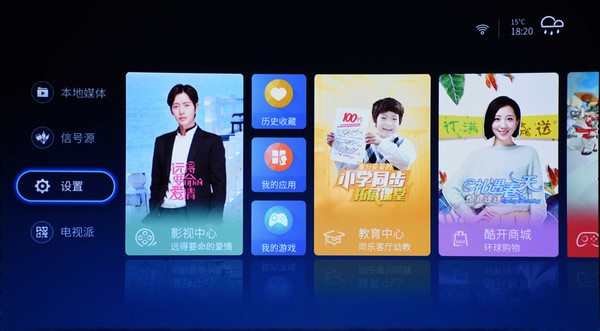
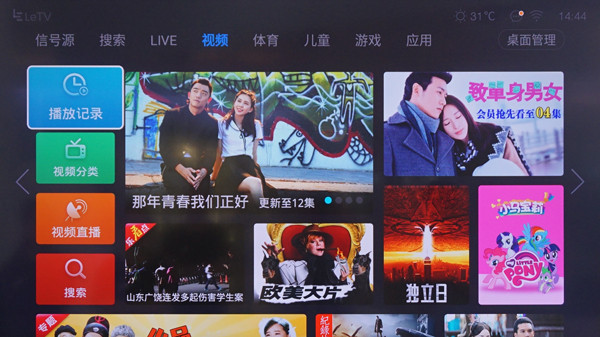
LeEui EUI has been given the label of “ecosystem†since its birth, using this “ecosystem†to organically integrate LeSpot's huge content resources to make services and users more closely. In addition to the basic interactions, EUI5.5 also innovatively added many smart interactions to make the operating system more user-friendly.
Popular - FunUI
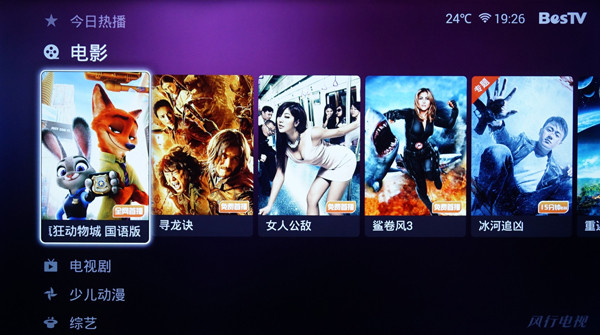
Storm - Wind UI

The exploration of the storm in the VR field is refreshing. The integration of VR and TV operating systems is a bold attempt for storms. The latest wind UI2.0 is based on VR-TVOS to achieve cross-platform, multi-terminal distributed computing. Easy to use, VR is cool and shocking.
Little Whale - WUI
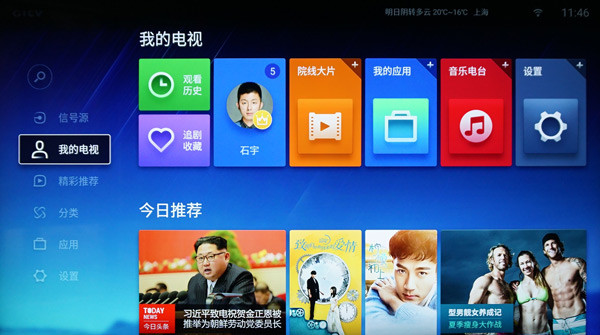
CANTV-Azure UI
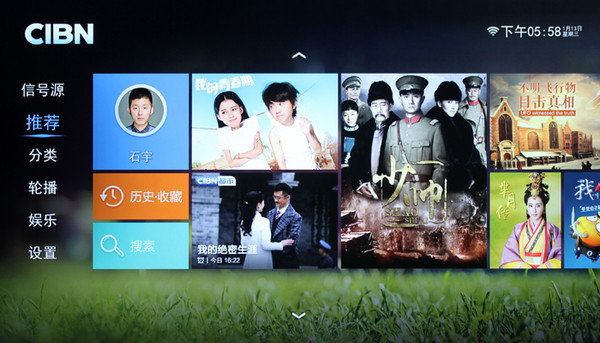
CANTV appears to be very low-key in the Internet TV brand. Relying on the massive resources of CIBN is its biggest feature. In the UI interaction design, it follows a simple enough style. People of different ages can quickly get started.
PPTV-PPOS
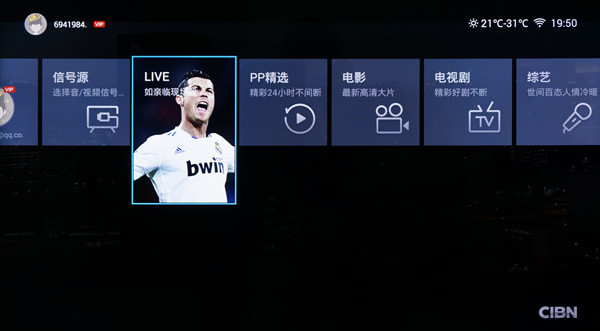
PPTV is also striving to build its own ecosystem. PPOS is a portrayal of openness and mutual benefit. PPTV is expanding its content in sports, film and television, and tourism. The same logic of "cross-interaction", PCON ICON design more transparent and simple, the same simple, easy to use.
Boot time-consuming test
In the traditional television era, there are fewer smart operating systems, and their booting is almost instantaneous. In the early days of smart TVs, the long boot time has been criticized by people who have just migrated from traditional television. With the advancement of technology, this situation is constantly changing. Different vendors, different optimization capabilities will lead to different results. We use the video to see who is starting the fastest.
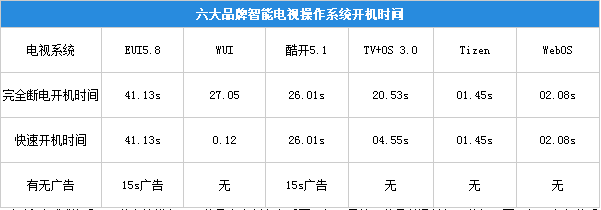
In order to ensure fairness and fairness, our start-up time-consuming tests will be carried out in two ways. One is to turn on the power after the power is completely turned off, and the other is to turn off the normal standby (standby). Some systems are optimized for normal shutdown (standby) startup speeds and can be implemented in seconds.
From the video of the power-off boot, you can see that the fastest boot is Samsung’s Tizen system, which turns on in 1.45 seconds, followed by LG’s WebOS. However, the operating speed of the Android kernel operating system in the domestic camp is obviously difficult, they all reached more than 20 seconds, of which TCL's TV + OS 3.0 boot optimization is best, and LeTV EUI5.5 may be due to boot loading ads too long, the entire boot is slower .
Unplug the TV plug completely power off the boot in the average home is not too much, most users are still accustomed to use remote control machine (standby). In this case, both WUI and TCL's TV + OS 3.0 of the Whale are very obviously speeding up the boot. Just like the mobile phone's standby time, the WUI's boot speed reaches an astonishing 0.12 second. TCL TV + OS 3.0 There are also excellent results of 4.55 seconds.
In terms of boot ads, of the six TV operating systems reviewed, only LeTV's EUI5.8 and Skyworth's Cool 5.1 had a 15 second boot advertisement, while none of the other brands had.
Turn-based advertising has become an important source of income for video service providers and content service providers. Video sites cross-border hardware installations naturally take advantage of boot advertising, and vendors offering open intensive platforms will certainly not miss this opportunity. Whether the boot advertisement affects the user experience is difficult to answer in a unified way. 15 seconds may be a critical point of the user experience. At present, everyone has not dared to cross this critical point.
UI style
Smart TVs have also embarked on the path of smart phones. Various manufacturers are deeply customizing their TV operating systems in order to obtain differentiation and personalization and to implant their own content. Domestically produced TVs are based on open source Android. Most of them are logically convergent. However, each manufacturer has its own standards in terms of content and layout, and ICON design. Therefore, it makes sense to compare them with each other. In particular, Tizen and WebOS, two completely different styles of operating systems, bring a more concise UI style and operational logic.
Page Layout
Very old and middle-aged people complain that the smart TV operation is too complicated and will give up after a few decisions. In fact, this is closely related to the layout of the page, the logic of operation, and the degree of icon recognition in the process of customizing the system. A good TV operating system does not require users to spend too much on learning costs, deliberately go to the habit, but can naturally guide users to facilitate the operation.
First of all, let's take a look at the page layout of the six major operating systems.

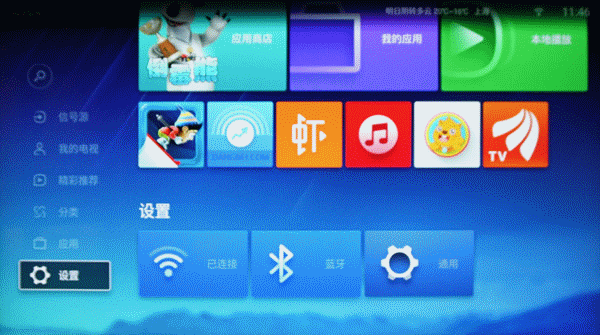
The WUI of the microwhale adopts a waterfall-style sliding operation. The seven major modules and submenus are presented on the desktop. The presentation mode is more compact, and the categories in the submenus are basically not duplicated.
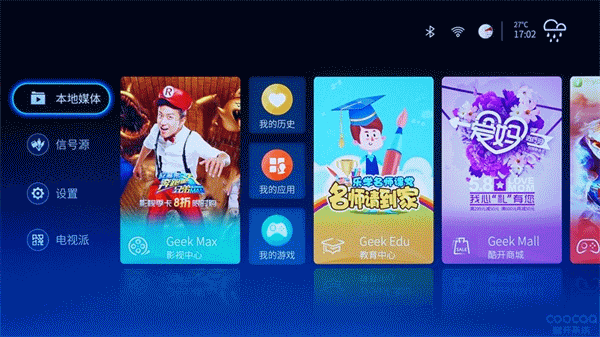
Skyworth's Coocaa 5.1 uses film and television as the first focus to spread to the periphery, and the core functions are easily found under the main page. The signal source and USB peripherals are hidden on the left side, taking into account the neat layout, but also take into account the user's needs.
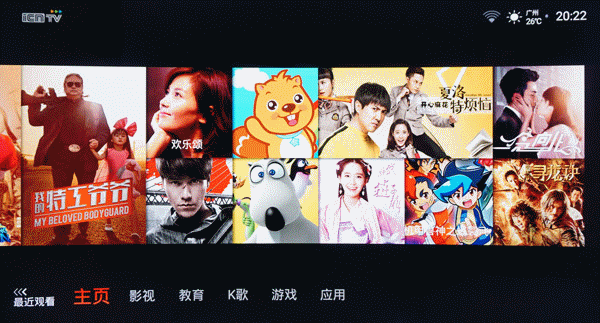
TCL TV + OS 3.0 also uses the left and right sliding operation layout, classification is relatively simple and very direct, different above several, the K song this function directly on the desktop, you can see TCL for home entertainment.
The above similarity in the layout is still relatively high, basically grabbed the user's needs, and began to spread from the center of film and television or live broadcast, the user's learning books are relatively low.
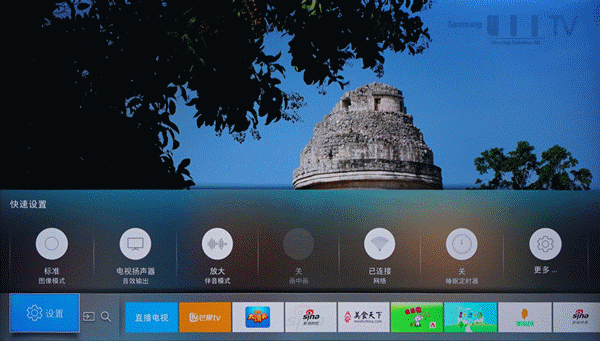
Samsung's Tizen operating system, the main page UI icons are located at the bottom, the bottom of the operation does not affect the normal playback of TV content in the upper part. The concept of film and television as the core is even more profound. In the arrangement of the tabs, it is streamlined into five settings: setting, source, search, live broadcast, and application. It is very streamlined and practical.
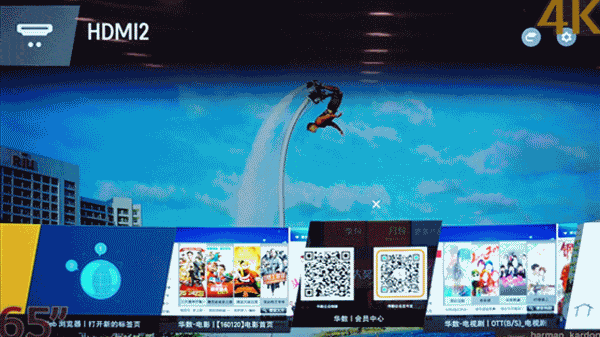
LG's WebOS also puts the system menu at the bottom, and slides out the content of the response by sliding it left and right, but has more content than Tizen in the arrangement, and also integrates a large number of LG's own applications.
Light from the page layout to compare, if you have to distinguish a high down, I prefer Samsung's Tizen, because most of the TV use scene is still live and on demand, Tizen has a more concise and efficient page layout. Of course, as mentioned above, the experience of the system has always been a very subjective thing. Maybe what you like is another one?
Logic level
The logic level concept can be described in such a simple way: You find the desired content on the TV, the steps you will go through. This is the logical level of TV operation. The operating system of the six brands of smart TVs is not significantly different at the logical level. Take the on-demand “Ode to Joy†as an example. The typical page is the main menu – the TV series classification menu – lock “Ode to Joy†– “Joy "Ode" introduction, selection - "Ode to joy" play.
Tizen and WebOS also basically follow this logic, and the only difference is only EUI. Under LeTV’s huge video resource base, EUI has a separate music video under the video module, in addition to the movie’s classification under the main page. Columns are almost integrated with all resources of the entire LeTV. This kind of double-layered logic has the feeling of being a village with flowers. Of course, if divided by logical hierarchy, EUI has one more click on the operation.
ICON design
A few years ago, in the 3D TV era, most of the TV operation interfaces were still materialized, and if they were overwhelming, they came to the fore. From the mainstream mobile operating system, we can easily find that this flat and lightweight design is more and more popular.
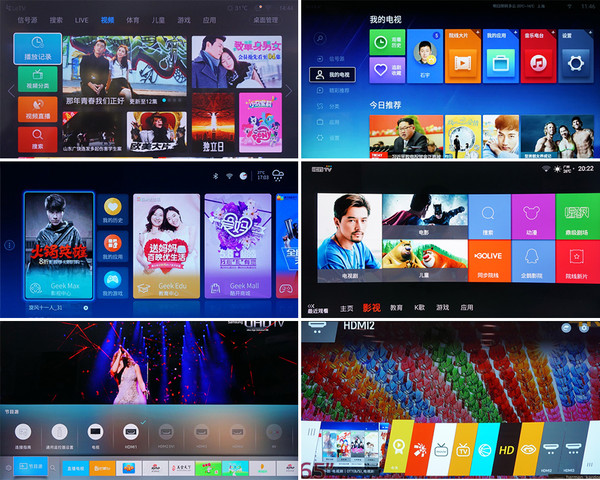
The ICON design of the six smart TVs all adopt this style of concept. The iconic effect of the magnetic card is very low-key and the menu design of the illustrated text is different. If there is a difference, then only the slight differences in the main colors and details are used. Now.
The card-like icons are either sleek or angular, TV+OS 3.0 and EUI are compact, WUI and Coocaura 5.1 are lighter, and Tizen has a frosted glass effect, and the font icons are smaller and more breathable. WebOS colorful drawers Smart cards are more flexible and the background can be previewed like a mobile phone.
From the perspective of color matching, in addition to the rainbow-colored design of WebOS, there is a uniform hue tendency in different columns, plus a background gradient or translucent treatment, so that the interface does not appear cluttered. There is a light sense of space.
Operating characteristics
Custom shortcuts
Everyone has different habits of using TVs, or the content of TVs they love at different time periods, so having a custom shortcut menu under the main page has become an indispensable function for users. At present, most TV operating systems are not sufficiently thorough about this DIY spirit. Most of them only stay on the shallow side, such as pulling a menu to the desktop or pulling an application to the desktop. , is a very closed DIY. It's like buying a bunch of ingredients but without a knife cutting them or carving them into exquisite food, you can only play like a building block like a brick.
The six smart TV operating systems, including the ones reviewed today, are not open enough. However, the most basic custom shortcuts are still absent.
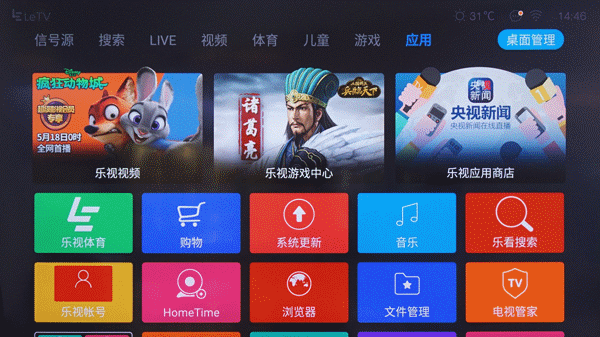
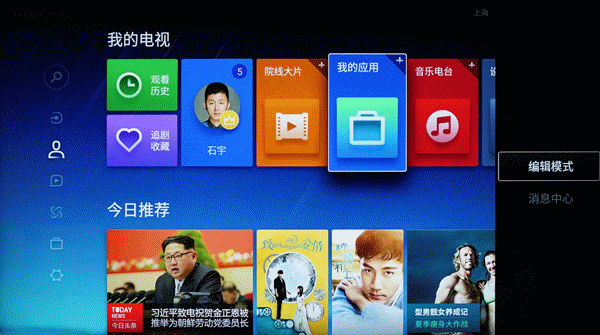
Under the "My TV" section, WUI can customize a large number of functions and applications for 4 modules.

CoolOpen 5.1 can also customize the application of several small icons under the main page, pull the commonly used applications or games directly to the homepage.
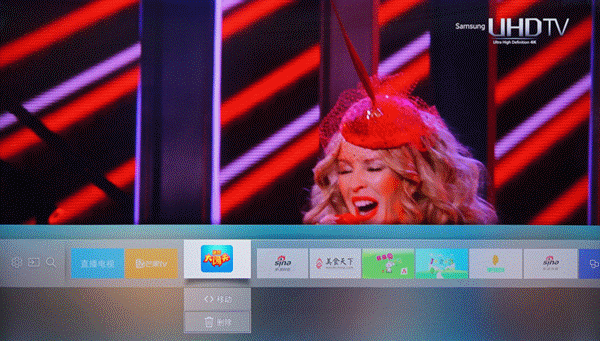
Tizen will automatically place the recently opened applications on the main page according to their frequency of use. Of course, you can also manually send application shortcuts to the desktop and adjust their order.
History and search
Faced with a huge video library of content providers, sometimes we can't help but we have so many things in front of them. Maybe all you want is to remember the names or not remember the names' resources (this is not nonsense).
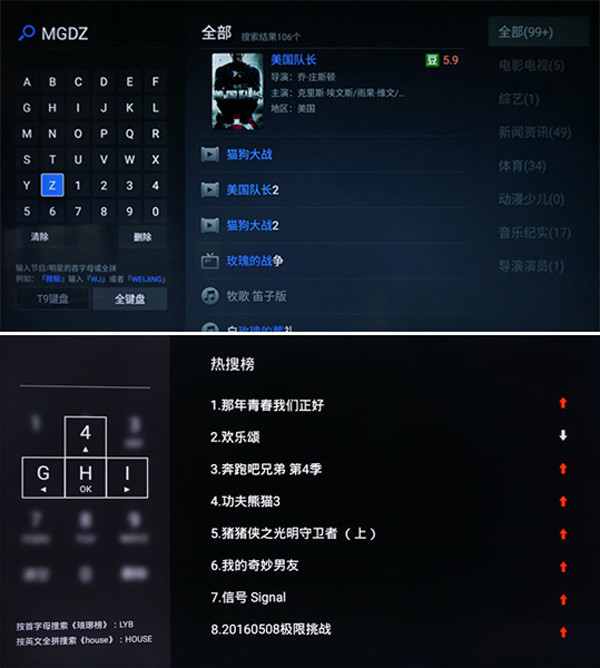
If you remember, please use the "Search" feature, including voice search, although the limitations of the current voice search are relatively high, but it is more than enough to deal with the video resources you can name.
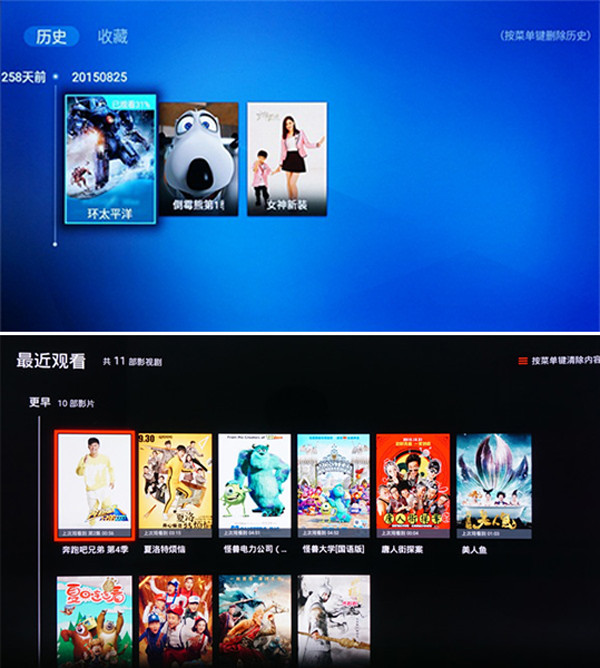
If it's a resource you can't remember, but you once watched it unintentionally on television, then “collecting†it, it doesn’t matter if it’s not a collection. If you patiently doubled your history, you’ll know your last time. What set of episodes are seen?
Video content
One of the things that domestic TV manufacturers have done most of all these years is the construction of content ecology. No matter whether it is a cross-border trader who is involved in the industry or a traditional manufacturer with a lot of qualifications, they are fighting for this piece of fat, although they are not yet familiar with it. Because only making money from hardware has not been played anymore, there are too many subversives to stir up the front and back, and the bucket of water is still very beautiful. Therefore, content profitability and advertising distribution have become a new way for domestic television manufacturers to make money. However, this will inevitably lead to a lack of success. Japanese and South Korean manufacturers did not regard this matter as the highlight.
Resource Platform

When it comes to content platforms and resource platforms, LeTV has to be mentioned. In former China, where copyright awareness was not strong enough, others did not take it for granted and purchased a large amount of copyrighted content at the price of cabbage. So now LeTV has become the premier video copyright reserve company in China. Therefore, in LeTV's Super TV, it is a matter of course that integrates all content resources of LeTV. Of course, there are a lot of public network video resources.
Another platform with a huge content, although it seems very quiet in public opinion, it is also a force that can never be ignored. It is the background of the micro-whale TV and the Chinese culture. This includes a strong collaboration lineup: Time Warner, TVB, Oriental DreamWorks, Can Star Production, IMAX, China Caixin Media, Sports and Sports, Shengli Family, Guevara Dream Center and many more. At the same time, there are Alibaba and Tencent investment behind the micro-whale, Tencent video also appeared on the micro-whale TV.
Skyworth is in-depth cooperation with Tencent Video, in-depth cooperation between TCL and ICNTV (later may also carry LeTV resources, you know), Samsung and Mango TV cooperation, LG and China TV cooperation. Of course Skyworth and TCL also have a lot of public network resources, but Samsung, LG's video content service in China is a bit shabby.
Video loading fluency
This problem is also a place where many consumers have always had questions. During the peak hours of watching TV in the evening, no matter how fast the home network is, the on-demand platform or live platform will always appear occasionally. In fact, this situation is also very easy to understand, it is equivalent to the big guy playing LOL when you choose different nodes will have different delay rates, TV video platform content providers will also have a large number of IP nodes, the more these nodes, The wider the division, the smoother you will be watching videos at home. On the contrary, there is congestion on the line, and there will be stuck conditions regardless of the bandwidth of Gigabit broadband or Gigabit.
Current video on demand services will not have this problem, but in the case of popular webcasts, the pressure on the nodes is actually very great. However, the live webcast on TV is a restricted area. I believe that you have a self-made method for you, and Xiaobian is no longer embarrassed.
The sofa evaluation room played a unified film source “Ode to Joy†under the same network conditions (10M width). The difference in loading speed between the six brands of TVs was minimal.
Video resources show
Specific to the six major brands of detailed video resources, pull it out is a king. Hundreds of thousands of TV shows and millions of movies promoted by the product PPT and copywriters are the moons in the water.
However, it was only after being dragged out that it was discovered that in addition to the exclusive resources and home-made contents of each family, other resources were just like buses, and everyone was on the list.
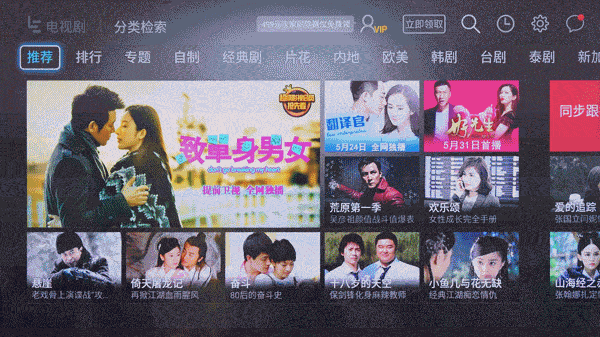

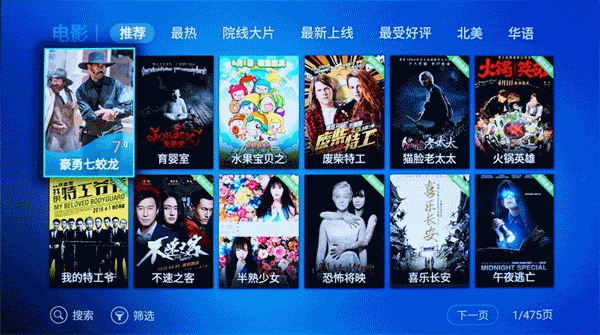

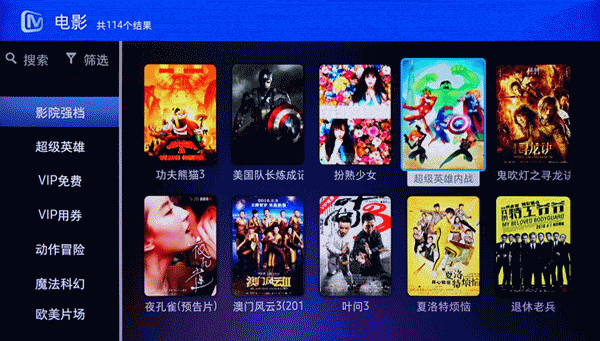
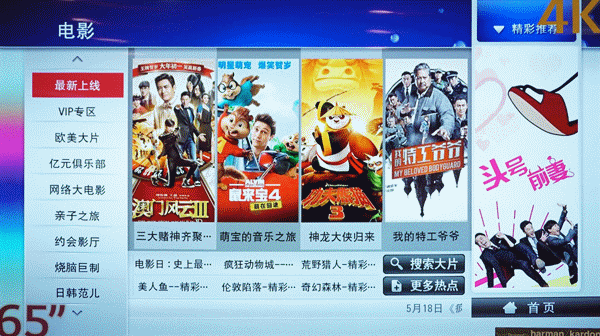
After reading such a long list above, let me summarize it. In addition to Samsung and LG's sturdy move to Mango TV and Wah TV, LeTV, Microwhale, Skyworth, and TCL have deeply integrated the resources of their own platforms or platforms, and have done detailed classification. Mango and Hwat are also classified and integrated, but it is equivalent to calling an APP alone, and the overall style is far from the original Tizen and WebOS.
Sports events
In addition to conventional resources, the most competitive is the live broadcasting and on-demand broadcast of sports events. This year is the year of Olympic sports. The competition for the copyright of various sports events is very fierce. In the beginning of the year, 8 billion players won the Super League copyright for five years, and LeEnet took 2.7 billion from the body of Austria for two years. The micro whale, who was a relative brother and sister of the Olympics, also won the copyright of the Super League.
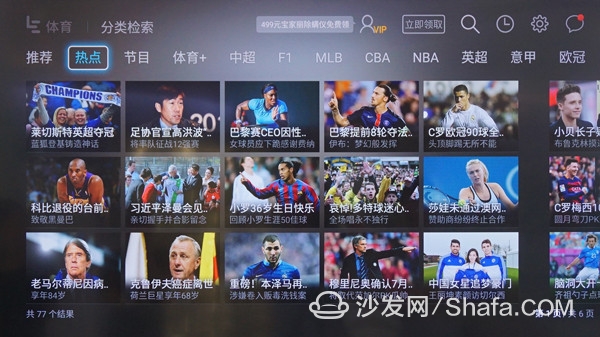
With regard to the copyright of football, the Super League is only the tip of the iceberg. The Premier League, Serie A, Champions League, La Liga, Bundesliga, French Armor, and so on also have a large audience. In terms of football resources, they have to admire the copyright of LeTV and micro-whales.
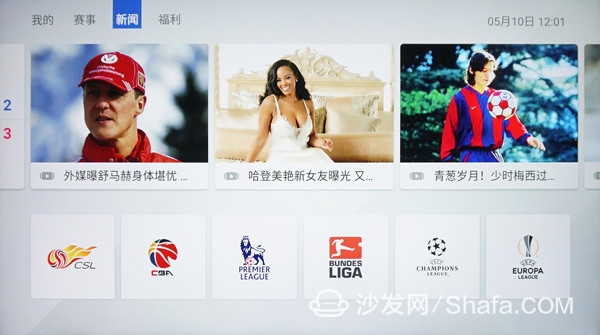
In fact, not only football, including NBA, F1 racing, and tennis are also popular sporting events. It also includes the recent popularity of the title of the surface to the gods fighting comprehensive sports events is also very interesting.
Not only does LeTV have good sports resources, but Tencent also attaches great importance to sports content. Both Skyworth and TCL have in-depth cooperation with Tencent and naturally have a large number of event resources. The most attractive is the NBA, Tencent spent heavily to sign the NBA's exclusive digital media copyright in China, this fragrant cake sold to various hardware vendors content platform, but also can get quite good benefits. Therefore, in the Penguin Cinema 5.1 system, you can see the content of NBA games.
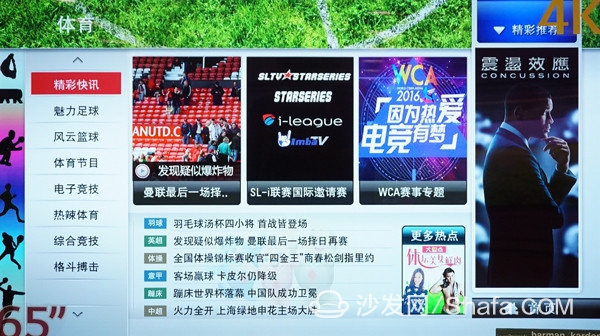
LG's China TV as a large broadcast control platform also has a considerable weight of sports events, including CBA, AFC, etc., and Samsung's Mango TV platform sports content is rare.
Games and Applications
Third-party app installation
Third-party applications have always been a sensitive area. TV boxes have been brutally poisoned. In order to avoid the use of smart TVs, this is only a point for Xiao Bian.

First of all, the six smart TV operating systems have built a wealth of application stores, which are rich in various applications and games. The use of ordinary users is completely adequate. The installation of third-party apps is mainly aimed at people with special needs. In addition to Tizen and WebOS, the other four operating systems are Android kernels, as long as it is an Android application that can theoretically be installed. The first two systems are only for Samsung, LG's own TV use, third-party applications almost no, there is no discussion of the significance of third-party app installation.
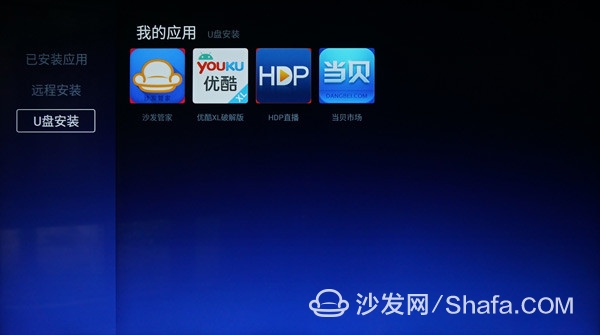
In the test, we directly copied the Android app to the USB flash drive and inserted it into the USB interface of the smart TV. We found that the four operating platforms of the Android core could recognize the app in addition to the open app 5.1. It can also be installed. It can be seen that TV makers have given consumers enough room to play.
What are the benefits of third-party app installation? Beckham, television cats, televisions. Hey cough, said a little bit more.
gaming platform
The game function of smart TV is an indispensable direction for the development of TV in the future. Many TV manufacturers have increased investment in video games, making home entertainment more interesting and interesting. From the perspective of the development of mobile games and online games, the game itself is a huge cash cow. If the family big screen entertainment space is opened, the TV platform will become another world for game developers.
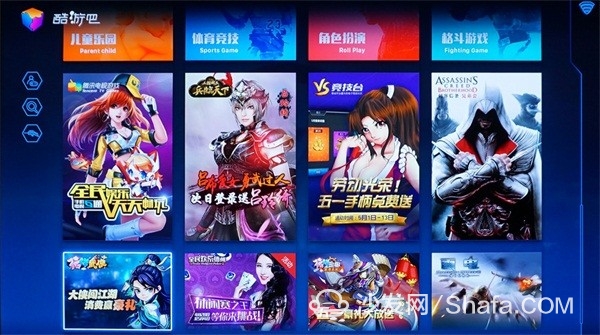
All-channel, dual-platform, multi-play, is a major feature of the video game platform, stand-alone games, network battles can be. In terms of operation mode, there are no problems with handle control, remote control, somatosensory manipulation, and mobile control. The key issue is the quality of the game.

At present, Skyworth and LeTV are more popular in video games. There are two exclusive titles in the cool open 5.1 Geek Box and EUI app store, as well as a wealth of gaming peripherals.
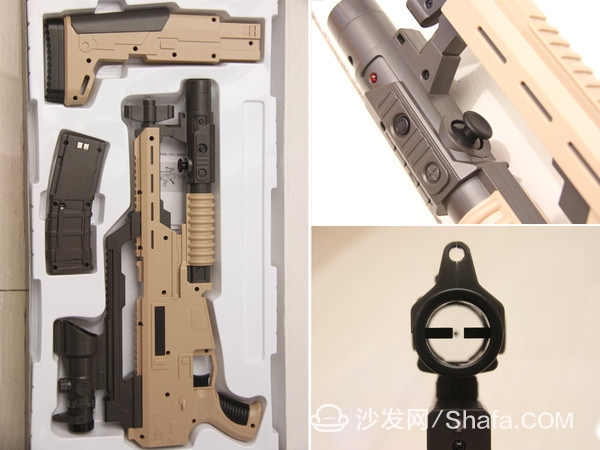
Skyworth has geek fast hand game controllers and geek guns, geek fast players are used to play fighting games such as the King of Fighters 97 game experience is very good, geek guns are used to play future heroes and dark breakout games are relatively straightforward.

LeTV's EUI application store also has a online game design game of Kingsoft OL. The matching game peripheral is a super gun king customized by LeTV. Xiaobian has experienced it at Leshi's Guangzhou flagship store. The game simulation gun, feel pretty good, there is a slight recoil when shooting.
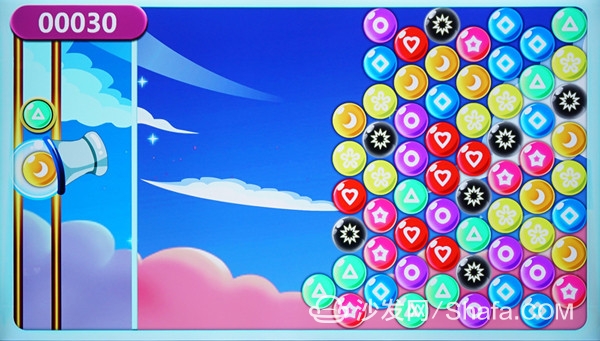
Of course there are also some casual games on Tizen and WebOS, like Bubble Bobble, Gold Miner and so on. There are about ten models in number. Compared with games on Android platform, it is still hard to come by. The quality of the game is better, it can be described as small and beautiful.
Application Management
Smart TVs on the Android platform are inevitably subject to software non-standardization. Applications that compete for jobs between jobs often occur frequently. Starting up and loading a lot of apps can also seriously affect the boot speed. At this point, TV manufacturers have made it very important to optimize their applications. However, the Tizen and WebOS platforms will not have many applications, and simple installation and uninstallation will be sufficient.
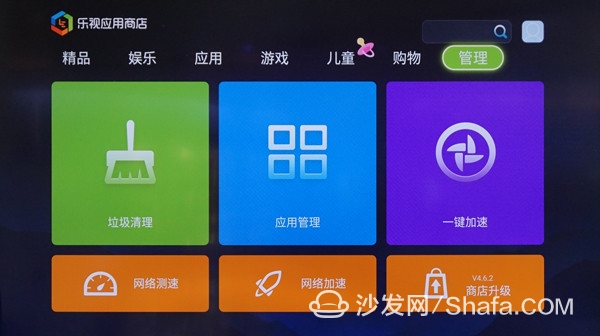
Basically, all four major Android platforms have their own application management operations. They generally include garbage cleanup, an acceleration, application update, and other additional functions such as network speed measurement and network acceleration.
Interactive function
The interactive functions on the smart TV can be roughly divided into two types, one is multi-screen interaction and the other is voice interaction. The so-called multi-screen interaction generally refers to projecting content on a mobile device onto a TV screen. All six participating TVs support this feature. If you have an unsupported TV in your hand, just install the relevant app and you will be able to LAN to achieve this effect.

There is not much to do at the operating system level. To truly connect seamlessly, you need to support the connection protocol. Commonly used DLNA, Miracast, AirMirror, and Airplay supported by Apple hardware, if the TV supports these Standard agreement, that multi-screen interaction will be much simpler.

Android multi-screen interaction is common, Tizen can use Screen Mirroring function to interact with Samsung's GALAXY series of mobile phones, this interaction is not a simple screen mapping, but when the TV shows you need to display content, the phone can also Operate other applications in the background.
On the WebOS, mobile devices and PC devices can interact with multiple TV screens through the Miracast/Intel@WiDi protocol. The connection is very simple. You only need to search for the wifi connection of the TV name in the wireless network list.
System settings
The system setting of the smart TV is a system module closely related to the hardware. Most of the interface and functions of the domestic Android camp system are convergent, with display, sound, wireless connection, signal source, etc., and a further set menu. The basic sound and picture settings related to backlighting, color, contrast, dynamic effects, etc. will be involved.
The system settings of Tizen and WebOS are more plentiful. Take Tizen as an example, there will be an expert setting option in each setting menu. You can perform more detailed debugging on TV related settings to meet the needs of DIY users. Ordinary mode can make small white users easy to use.
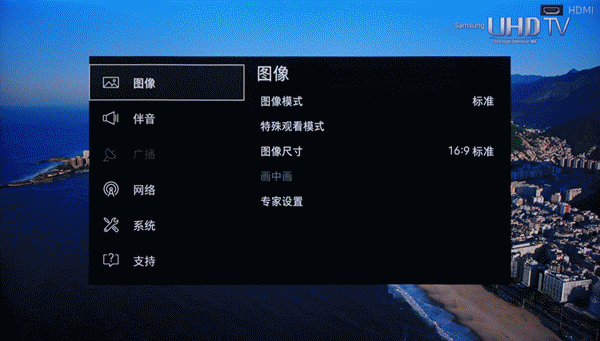
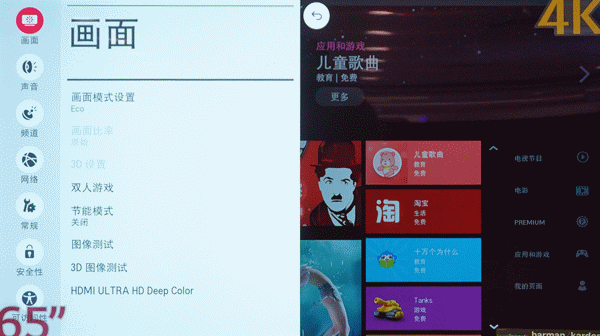
Samsung's consistent idea is to do this interactively, to make things that can be made out, listed there, maybe one day you will think of it to use.
Of course, this is also a product of excellent hardware drivers, not only the difference between Android and Tizen, there are some essential differences in the product design ideas. Of course, this is not to say that such system settings are better, but more possibilities are available to users. Some people like it and some people feel it unnecessary.
Hengping summary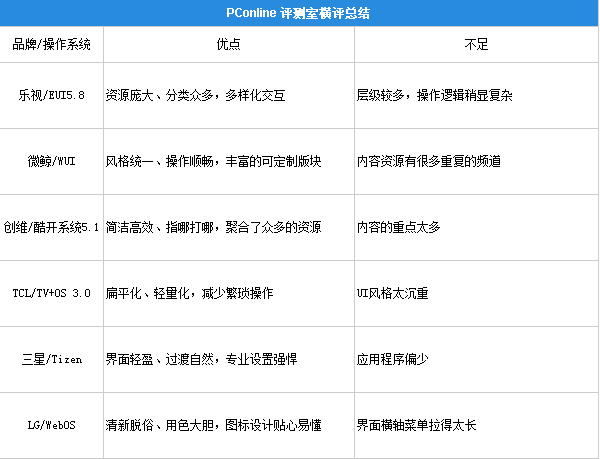
Will you fall in love with a television because of a TV UI? Through the comparative evaluation of the 7 major projects, we found that the operating system of smart TVs is also facing the same problems as the hardware, and the homogenization phenomenon is serious. In most cases, the difference between them is just the difference of certain points, such as the different order of the menus, the different logical levels, and the different visual icon designs. However, in terms of core concepts, all major smart operating systems are circumventing weaknesses and exerting their strongest part of overall strength. Some attach importance to novel interactions, some attach importance to diverse ecological contents, and some emphasize light weight and are extremely simplified and focused. The unified design language, even if it is on the same operating system for the Android operating system also played the recognition of the UI brand, and tapped their understanding of the user experience. As a consumer, of course, he hopes to have a lofty May and a humble grass when they come together. They will come together and go hand in hand.

TV is still more of a consumable product, and television manufacturers are increasingly emphasizing the difference and uniqueness of their own TV's operating system and content. As television gradually embarks on an intelligent road, smart operating systems have become an important factor influencing consumer experience, in addition to picture quality. Whether it is the fluency of the system or the abundance of resources, it has become a place where TV makers must compare, and it is also a project that needs to be carried out by every friend at the press conference.

Since the war of words is so fierce, how different are the actual television operating systems in the end? This time, we selected two brands of Internet TV brands, namely, Internet brands, domestically-made traditional brands, and Japanese and Korean brands, to conduct comparative evaluations. Through various levels of comparison or testing, we can see what kind of UI design and operating characteristics we have. And audio and video experience is your favorite. Of course, the product experience is a relatively subjective thing. The netizens may have their own opinions in mind. You are welcome to speak in the commentary area and tell us what is the perfect TV operating system in your heart.
Hengping explanation:


Introduction to mainstream Internet TV UI
The six brands are just a representative. The smart TV brands on the market are far more than these six brands. Before evaluating the six brands of smart TV UIs, let’s find out what the current mainstream Internet TV operating systems on the domestic market are like. specialty.
Cool open - cool open system

Everyone knows that CoolCube is an Internet TV brand owned by Skyworth Group, and CoolOpen and Skyworth currently share the same TV operating system - CoolOpen System 5.0 (the latest version is CoolOpen 5.1), and it's mainly about lightweight operation. The system has gained a good reputation with a large number of user groups and an open and integrated smart screen concept.
LeTV -EUI
LeTV -EUI

LeEui EUI has been given the label of “ecosystem†since its birth, using this “ecosystem†to organically integrate LeSpot's huge content resources to make services and users more closely. In addition to the basic interactions, EUI5.5 also innovatively added many smart interactions to make the operating system more user-friendly.
Popular - FunUI

Popularity of FunUI2.0 is a typical minimalist in the smart TV operating system. It removes extra interference information and is what you see is what you get on the main page. Cross-interactive mode allows the desktop space to be extended, while also greatly reducing the user's learning costs. Popularity is also the oldest brother in the video field. Cooperation with BesTV makes FunUI richer in content resources. Is a TV industry can not be ignored a new force.
Storm - Wind UI

The exploration of the storm in the VR field is refreshing. The integration of VR and TV operating systems is a bold attempt for storms. The latest wind UI2.0 is based on VR-TVOS to achieve cross-platform, multi-terminal distributed computing. Easy to use, VR is cool and shocking.
Little Whale - WUI

The whale WUI feels smooth and natural. It uses a flatter waterfall flow homepage design to easily find what you want. And the main page has a lot of customizable modules, putting the content you like at your fingertips.
CANTV-Azure UI

Azure 4.0UI
CANTV appears to be very low-key in the Internet TV brand. Relying on the massive resources of CIBN is its biggest feature. In the UI interaction design, it follows a simple enough style. People of different ages can quickly get started.
PPTV-PPOS

PPOS
PPTV is also striving to build its own ecosystem. PPOS is a portrayal of openness and mutual benefit. PPTV is expanding its content in sports, film and television, and tourism. The same logic of "cross-interaction", PCON ICON design more transparent and simple, the same simple, easy to use.
Boot time-consuming test
In the traditional television era, there are fewer smart operating systems, and their booting is almost instantaneous. In the early days of smart TVs, the long boot time has been criticized by people who have just migrated from traditional television. With the advancement of technology, this situation is constantly changing. Different vendors, different optimization capabilities will lead to different results. We use the video to see who is starting the fastest.

In order to ensure fairness and fairness, our start-up time-consuming tests will be carried out in two ways. One is to turn on the power after the power is completely turned off, and the other is to turn off the normal standby (standby). Some systems are optimized for normal shutdown (standby) startup speeds and can be implemented in seconds.
From the video of the power-off boot, you can see that the fastest boot is Samsung’s Tizen system, which turns on in 1.45 seconds, followed by LG’s WebOS. However, the operating speed of the Android kernel operating system in the domestic camp is obviously difficult, they all reached more than 20 seconds, of which TCL's TV + OS 3.0 boot optimization is best, and LeTV EUI5.5 may be due to boot loading ads too long, the entire boot is slower .
Unplug the TV plug completely power off the boot in the average home is not too much, most users are still accustomed to use remote control machine (standby). In this case, both WUI and TCL's TV + OS 3.0 of the Whale are very obviously speeding up the boot. Just like the mobile phone's standby time, the WUI's boot speed reaches an astonishing 0.12 second. TCL TV + OS 3.0 There are also excellent results of 4.55 seconds.
In terms of boot ads, of the six TV operating systems reviewed, only LeTV's EUI5.8 and Skyworth's Cool 5.1 had a 15 second boot advertisement, while none of the other brands had.
Turn-based advertising has become an important source of income for video service providers and content service providers. Video sites cross-border hardware installations naturally take advantage of boot advertising, and vendors offering open intensive platforms will certainly not miss this opportunity. Whether the boot advertisement affects the user experience is difficult to answer in a unified way. 15 seconds may be a critical point of the user experience. At present, everyone has not dared to cross this critical point.
UI style
Smart TVs have also embarked on the path of smart phones. Various manufacturers are deeply customizing their TV operating systems in order to obtain differentiation and personalization and to implant their own content. Domestically produced TVs are based on open source Android. Most of them are logically convergent. However, each manufacturer has its own standards in terms of content and layout, and ICON design. Therefore, it makes sense to compare them with each other. In particular, Tizen and WebOS, two completely different styles of operating systems, bring a more concise UI style and operational logic.
Page Layout
Very old and middle-aged people complain that the smart TV operation is too complicated and will give up after a few decisions. In fact, this is closely related to the layout of the page, the logic of operation, and the degree of icon recognition in the process of customizing the system. A good TV operating system does not require users to spend too much on learning costs, deliberately go to the habit, but can naturally guide users to facilitate the operation.
First of all, let's take a look at the page layout of the six major operating systems.

EUI5.8
LeEui EUI5.8 presents 8 modules and sub-menu contents in a sliding manner. In terms of rendering effect, the amount of information conveyed to the users is relatively large, which is exactly the same as the style of the LeTV mobile operating system. This layout shows the rich ecosystem of LeTV.

WUI
The WUI of the microwhale adopts a waterfall-style sliding operation. The seven major modules and submenus are presented on the desktop. The presentation mode is more compact, and the categories in the submenus are basically not duplicated.

Cool open operating system 5.1
Skyworth's Coocaa 5.1 uses film and television as the first focus to spread to the periphery, and the core functions are easily found under the main page. The signal source and USB peripherals are hidden on the left side, taking into account the neat layout, but also take into account the user's needs.

TV+OS 3.0
TCL TV + OS 3.0 also uses the left and right sliding operation layout, classification is relatively simple and very direct, different above several, the K song this function directly on the desktop, you can see TCL for home entertainment.
The above similarity in the layout is still relatively high, basically grabbed the user's needs, and began to spread from the center of film and television or live broadcast, the user's learning books are relatively low.

Tizen
Samsung's Tizen operating system, the main page UI icons are located at the bottom, the bottom of the operation does not affect the normal playback of TV content in the upper part. The concept of film and television as the core is even more profound. In the arrangement of the tabs, it is streamlined into five settings: setting, source, search, live broadcast, and application. It is very streamlined and practical.

LG's WebOS also puts the system menu at the bottom, and slides out the content of the response by sliding it left and right, but has more content than Tizen in the arrangement, and also integrates a large number of LG's own applications.
Light from the page layout to compare, if you have to distinguish a high down, I prefer Samsung's Tizen, because most of the TV use scene is still live and on demand, Tizen has a more concise and efficient page layout. Of course, as mentioned above, the experience of the system has always been a very subjective thing. Maybe what you like is another one?
Logic level
The logic level concept can be described in such a simple way: You find the desired content on the TV, the steps you will go through. This is the logical level of TV operation. The operating system of the six brands of smart TVs is not significantly different at the logical level. Take the on-demand “Ode to Joy†as an example. The typical page is the main menu – the TV series classification menu – lock “Ode to Joy†– “Joy "Ode" introduction, selection - "Ode to joy" play.
Tizen and WebOS also basically follow this logic, and the only difference is only EUI. Under LeTV’s huge video resource base, EUI has a separate music video under the video module, in addition to the movie’s classification under the main page. Columns are almost integrated with all resources of the entire LeTV. This kind of double-layered logic has the feeling of being a village with flowers. Of course, if divided by logical hierarchy, EUI has one more click on the operation.
ICON design
A few years ago, in the 3D TV era, most of the TV operation interfaces were still materialized, and if they were overwhelming, they came to the fore. From the mainstream mobile operating system, we can easily find that this flat and lightweight design is more and more popular.

The ICON design of the six smart TVs all adopt this style of concept. The iconic effect of the magnetic card is very low-key and the menu design of the illustrated text is different. If there is a difference, then only the slight differences in the main colors and details are used. Now.
The card-like icons are either sleek or angular, TV+OS 3.0 and EUI are compact, WUI and Coocaura 5.1 are lighter, and Tizen has a frosted glass effect, and the font icons are smaller and more breathable. WebOS colorful drawers Smart cards are more flexible and the background can be previewed like a mobile phone.
From the perspective of color matching, in addition to the rainbow-colored design of WebOS, there is a uniform hue tendency in different columns, plus a background gradient or translucent treatment, so that the interface does not appear cluttered. There is a light sense of space.
Operating characteristics
Custom shortcuts
Everyone has different habits of using TVs, or the content of TVs they love at different time periods, so having a custom shortcut menu under the main page has become an indispensable function for users. At present, most TV operating systems are not sufficiently thorough about this DIY spirit. Most of them only stay on the shallow side, such as pulling a menu to the desktop or pulling an application to the desktop. , is a very closed DIY. It's like buying a bunch of ingredients but without a knife cutting them or carving them into exquisite food, you can only play like a building block like a brick.
The six smart TV operating systems, including the ones reviewed today, are not open enough. However, the most basic custom shortcuts are still absent.

Like the EUI's Manage Desktop feature, you can sort commonly used columns in a mobile position;

Under the "My TV" section, WUI can customize a large number of functions and applications for 4 modules.

CoolOpen 5.1 can also customize the application of several small icons under the main page, pull the commonly used applications or games directly to the homepage.

Tizen will automatically place the recently opened applications on the main page according to their frequency of use. Of course, you can also manually send application shortcuts to the desktop and adjust their order.
History and search
Faced with a huge video library of content providers, sometimes we can't help but we have so many things in front of them. Maybe all you want is to remember the names or not remember the names' resources (this is not nonsense).

If you remember, please use the "Search" feature, including voice search, although the limitations of the current voice search are relatively high, but it is more than enough to deal with the video resources you can name.

If it's a resource you can't remember, but you once watched it unintentionally on television, then “collecting†it, it doesn’t matter if it’s not a collection. If you patiently doubled your history, you’ll know your last time. What set of episodes are seen?
Video content
One of the things that domestic TV manufacturers have done most of all these years is the construction of content ecology. No matter whether it is a cross-border trader who is involved in the industry or a traditional manufacturer with a lot of qualifications, they are fighting for this piece of fat, although they are not yet familiar with it. Because only making money from hardware has not been played anymore, there are too many subversives to stir up the front and back, and the bucket of water is still very beautiful. Therefore, content profitability and advertising distribution have become a new way for domestic television manufacturers to make money. However, this will inevitably lead to a lack of success. Japanese and South Korean manufacturers did not regard this matter as the highlight.
Resource Platform

When it comes to content platforms and resource platforms, LeTV has to be mentioned. In former China, where copyright awareness was not strong enough, others did not take it for granted and purchased a large amount of copyrighted content at the price of cabbage. So now LeTV has become the premier video copyright reserve company in China. Therefore, in LeTV's Super TV, it is a matter of course that integrates all content resources of LeTV. Of course, there are a lot of public network video resources.
Another platform with a huge content, although it seems very quiet in public opinion, it is also a force that can never be ignored. It is the background of the micro-whale TV and the Chinese culture. This includes a strong collaboration lineup: Time Warner, TVB, Oriental DreamWorks, Can Star Production, IMAX, China Caixin Media, Sports and Sports, Shengli Family, Guevara Dream Center and many more. At the same time, there are Alibaba and Tencent investment behind the micro-whale, Tencent video also appeared on the micro-whale TV.
Skyworth is in-depth cooperation with Tencent Video, in-depth cooperation between TCL and ICNTV (later may also carry LeTV resources, you know), Samsung and Mango TV cooperation, LG and China TV cooperation. Of course Skyworth and TCL also have a lot of public network resources, but Samsung, LG's video content service in China is a bit shabby.
Video loading fluency
This problem is also a place where many consumers have always had questions. During the peak hours of watching TV in the evening, no matter how fast the home network is, the on-demand platform or live platform will always appear occasionally. In fact, this situation is also very easy to understand, it is equivalent to the big guy playing LOL when you choose different nodes will have different delay rates, TV video platform content providers will also have a large number of IP nodes, the more these nodes, The wider the division, the smoother you will be watching videos at home. On the contrary, there is congestion on the line, and there will be stuck conditions regardless of the bandwidth of Gigabit broadband or Gigabit.
Current video on demand services will not have this problem, but in the case of popular webcasts, the pressure on the nodes is actually very great. However, the live webcast on TV is a restricted area. I believe that you have a self-made method for you, and Xiaobian is no longer embarrassed.
WUI Demonstrates Joyful Loading Speed
The sofa evaluation room played a unified film source “Ode to Joy†under the same network conditions (10M width). The difference in loading speed between the six brands of TVs was minimal.
Video resources show
Specific to the six major brands of detailed video resources, pull it out is a king. Hundreds of thousands of TV shows and millions of movies promoted by the product PPT and copywriters are the moons in the water.
However, it was only after being dragged out that it was discovered that in addition to the exclusive resources and home-made contents of each family, other resources were just like buses, and everyone was on the list.

EUI video resources show

WUI video resources show

Cool open 5.1 video resources show

TV + OS 3.0 video resources show

Tizen video resources show

WebOS video resources show
After reading such a long list above, let me summarize it. In addition to Samsung and LG's sturdy move to Mango TV and Wah TV, LeTV, Microwhale, Skyworth, and TCL have deeply integrated the resources of their own platforms or platforms, and have done detailed classification. Mango and Hwat are also classified and integrated, but it is equivalent to calling an APP alone, and the overall style is far from the original Tizen and WebOS.
Sports events
In addition to conventional resources, the most competitive is the live broadcasting and on-demand broadcast of sports events. This year is the year of Olympic sports. The competition for the copyright of various sports events is very fierce. In the beginning of the year, 8 billion players won the Super League copyright for five years, and LeEnet took 2.7 billion from the body of Austria for two years. The micro whale, who was a relative brother and sister of the Olympics, also won the copyright of the Super League.

LeTV Sports' huge event library
With regard to the copyright of football, the Super League is only the tip of the iceberg. The Premier League, Serie A, Champions League, La Liga, Bundesliga, French Armor, and so on also have a large audience. In terms of football resources, they have to admire the copyright of LeTV and micro-whales.

Physical and Dynamic Youth's Pro-Boy Little Whale Sports
In fact, not only football, including NBA, F1 racing, and tennis are also popular sporting events. It also includes the recent popularity of the title of the surface to the gods fighting comprehensive sports events is also very interesting.
Not only does LeTV have good sports resources, but Tencent also attaches great importance to sports content. Both Skyworth and TCL have in-depth cooperation with Tencent and naturally have a large number of event resources. The most attractive is the NBA, Tencent spent heavily to sign the NBA's exclusive digital media copyright in China, this fragrant cake sold to various hardware vendors content platform, but also can get quite good benefits. Therefore, in the Penguin Cinema 5.1 system, you can see the content of NBA games.

Broadcast Control Platform China Sports
LG's China TV as a large broadcast control platform also has a considerable weight of sports events, including CBA, AFC, etc., and Samsung's Mango TV platform sports content is rare.
Games and Applications
Third-party app installation
Third-party applications have always been a sensitive area. TV boxes have been brutally poisoned. In order to avoid the use of smart TVs, this is only a point for Xiao Bian.

First of all, the six smart TV operating systems have built a wealth of application stores, which are rich in various applications and games. The use of ordinary users is completely adequate. The installation of third-party apps is mainly aimed at people with special needs. In addition to Tizen and WebOS, the other four operating systems are Android kernels, as long as it is an Android application that can theoretically be installed. The first two systems are only for Samsung, LG's own TV use, third-party applications almost no, there is no discussion of the significance of third-party app installation.

In the test, we directly copied the Android app to the USB flash drive and inserted it into the USB interface of the smart TV. We found that the four operating platforms of the Android core could recognize the app in addition to the open app 5.1. It can also be installed. It can be seen that TV makers have given consumers enough room to play.
What are the benefits of third-party app installation? Beckham, television cats, televisions. Hey cough, said a little bit more.
gaming platform
The game function of smart TV is an indispensable direction for the development of TV in the future. Many TV manufacturers have increased investment in video games, making home entertainment more interesting and interesting. From the perspective of the development of mobile games and online games, the game itself is a huge cash cow. If the family big screen entertainment space is opened, the TV platform will become another world for game developers.

All-channel, dual-platform, multi-play, is a major feature of the video game platform, stand-alone games, network battles can be. In terms of operation mode, there are no problems with handle control, remote control, somatosensory manipulation, and mobile control. The key issue is the quality of the game.

At present, Skyworth and LeTV are more popular in video games. There are two exclusive titles in the cool open 5.1 Geek Box and EUI app store, as well as a wealth of gaming peripherals.

Skyworth has geek fast hand game controllers and geek guns, geek fast players are used to play fighting games such as the King of Fighters 97 game experience is very good, geek guns are used to play future heroes and dark breakout games are relatively straightforward.

LeTV's EUI application store also has a online game design game of Kingsoft OL. The matching game peripheral is a super gun king customized by LeTV. Xiaobian has experienced it at Leshi's Guangzhou flagship store. The game simulation gun, feel pretty good, there is a slight recoil when shooting.

Of course there are also some casual games on Tizen and WebOS, like Bubble Bobble, Gold Miner and so on. There are about ten models in number. Compared with games on Android platform, it is still hard to come by. The quality of the game is better, it can be described as small and beautiful.
Application Management
Smart TVs on the Android platform are inevitably subject to software non-standardization. Applications that compete for jobs between jobs often occur frequently. Starting up and loading a lot of apps can also seriously affect the boot speed. At this point, TV manufacturers have made it very important to optimize their applications. However, the Tizen and WebOS platforms will not have many applications, and simple installation and uninstallation will be sufficient.

Basically, all four major Android platforms have their own application management operations. They generally include garbage cleanup, an acceleration, application update, and other additional functions such as network speed measurement and network acceleration.
Interactive function
The interactive functions on the smart TV can be roughly divided into two types, one is multi-screen interaction and the other is voice interaction. The so-called multi-screen interaction generally refers to projecting content on a mobile device onto a TV screen. All six participating TVs support this feature. If you have an unsupported TV in your hand, just install the relevant app and you will be able to LAN to achieve this effect.

There is not much to do at the operating system level. To truly connect seamlessly, you need to support the connection protocol. Commonly used DLNA, Miracast, AirMirror, and Airplay supported by Apple hardware, if the TV supports these Standard agreement, that multi-screen interaction will be much simpler.

Android multi-screen interaction is common, Tizen can use Screen Mirroring function to interact with Samsung's GALAXY series of mobile phones, this interaction is not a simple screen mapping, but when the TV shows you need to display content, the phone can also Operate other applications in the background.
On the WebOS, mobile devices and PC devices can interact with multiple TV screens through the Miracast/Intel@WiDi protocol. The connection is very simple. You only need to search for the wifi connection of the TV name in the wireless network list.
System settings
The system setting of the smart TV is a system module closely related to the hardware. Most of the interface and functions of the domestic Android camp system are convergent, with display, sound, wireless connection, signal source, etc., and a further set menu. The basic sound and picture settings related to backlighting, color, contrast, dynamic effects, etc. will be involved.
The system settings of Tizen and WebOS are more plentiful. Take Tizen as an example, there will be an expert setting option in each setting menu. You can perform more detailed debugging on TV related settings to meet the needs of DIY users. Ordinary mode can make small white users easy to use.

Tizen system settings

WebOS system settings
Samsung's consistent idea is to do this interactively, to make things that can be made out, listed there, maybe one day you will think of it to use.
Of course, this is also a product of excellent hardware drivers, not only the difference between Android and Tizen, there are some essential differences in the product design ideas. Of course, this is not to say that such system settings are better, but more possibilities are available to users. Some people like it and some people feel it unnecessary.
Hengping summary

Will you fall in love with a television because of a TV UI? Through the comparative evaluation of the 7 major projects, we found that the operating system of smart TVs is also facing the same problems as the hardware, and the homogenization phenomenon is serious. In most cases, the difference between them is just the difference of certain points, such as the different order of the menus, the different logical levels, and the different visual icon designs. However, in terms of core concepts, all major smart operating systems are circumventing weaknesses and exerting their strongest part of overall strength. Some attach importance to novel interactions, some attach importance to diverse ecological contents, and some emphasize light weight and are extremely simplified and focused. The unified design language, even if it is on the same operating system for the Android operating system also played the recognition of the UI brand, and tapped their understanding of the user experience. As a consumer, of course, he hopes to have a lofty May and a humble grass when they come together. They will come together and go hand in hand.
16V AC DC wall mount switching power adapter was widely used for any small power device, such as CCTV Cameras, wireless routers, LED strip, ADSL cats, HUB, switches, security cameras, audio/video power supply. For 16V wall mount power supply, the maximum output current is 2.25A,total 36W output. Our power adaptor meets different certificates for different countries` request – like UL list/CCC-CQC/ PES/SAA/C-TICK/CB/GB certificate. All our switching power supplies were getting 2-hours burn-in test & 3KV high voltage test during production.
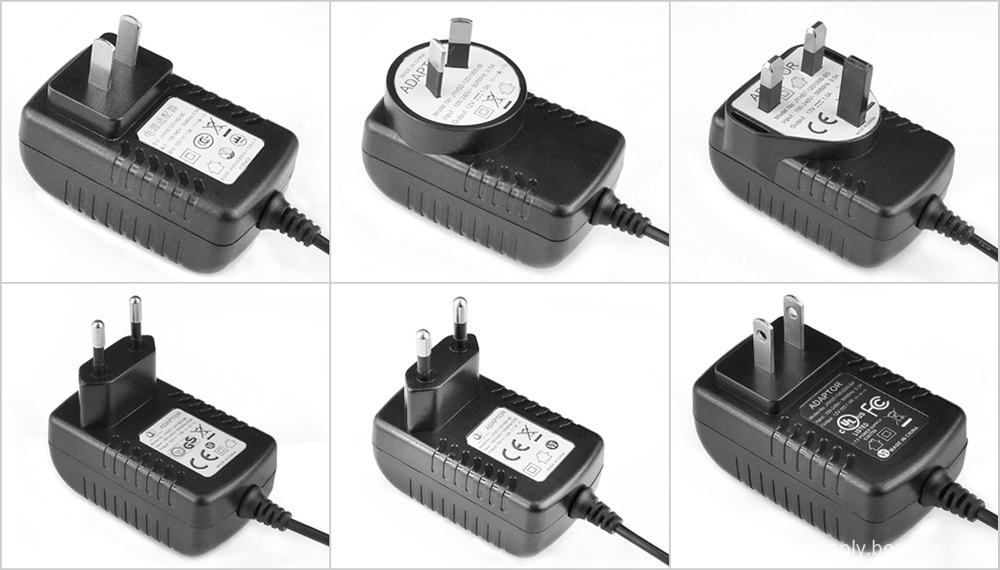
16V AC DC Switching Power Adapter
16V Switching Power Adapter,DC Switching Power Adapter,AC Switching Power Adapter
Shenzhen Juyuanhai Electronic Co., Ltd. , https://www.powersupplycn.com